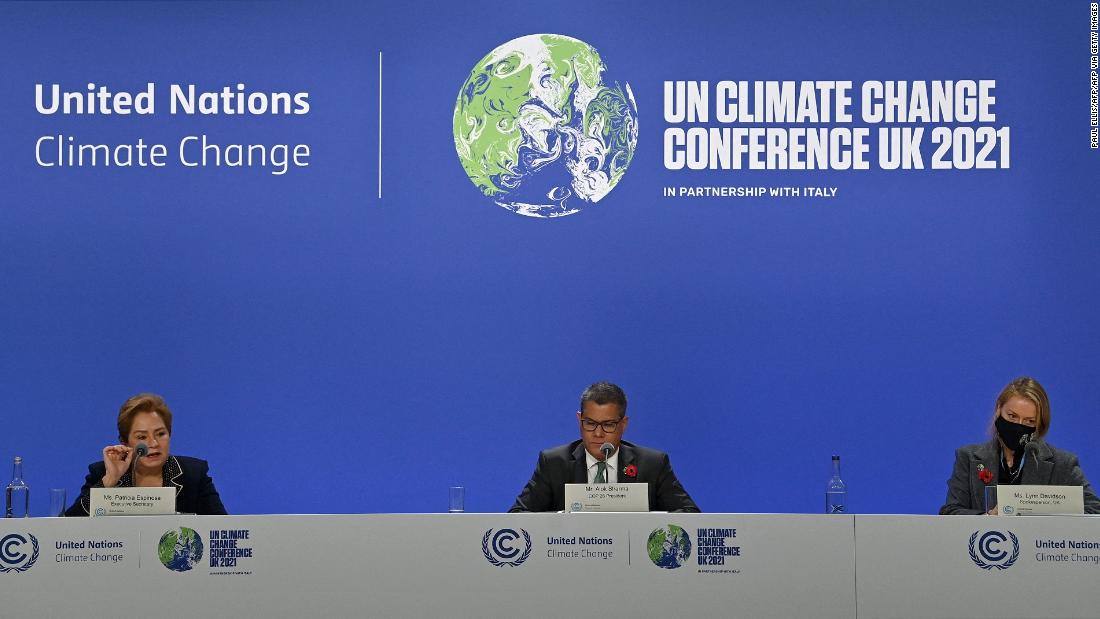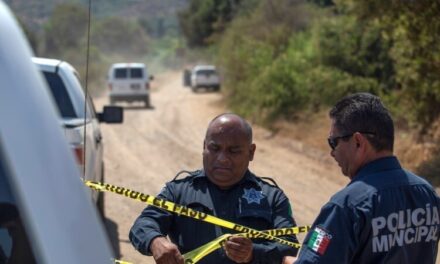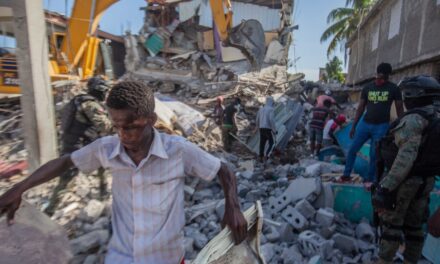
COP26 draft deal calls on countries to boost emissions cuts by end of 2022. Here’s what else is in it

Glasgow, Scotland (CNN)A draft of the Glasgow Agreement published on Wednesday includes language that says the world should be aiming to limit global warming to 1.5 degrees Celsius and acknowledges the role of fossil fuels in the climate crisis, a first for the annual Conference of the Parties on climate. If the draft is agreed in current form, it could pave the way for deeper emissions cuts by the end of next year.
The document is not final and COP26 delegates from nearly 200 countries will now negotiate the details over the next few days. Consensus from all nations is required.
Typically draft COP agreements are watered down in the final text, but there is also a chance that some elements could be strengthened, depending on how wrangling between countries pans out.
Here’s what’s in the draft:
On 1.5 degrees
The document “recognizes that the impacts of climate change will be much lower at the temperature increase of 1.5 °C compared to 2 °C and resolves to pursue efforts to limit the temperature increase to 1.5 °C.”
Scientists say the world must limit global warming to 1.5 degrees Celsius above pre-industrial levels in order to avoid the climate crisis worsening and approaching a catastrophic scenario.
A key analysis published on Tuesday said the world is on track for 2.4 degrees of warming. That would mean the risks of extreme droughts, wildfires, floods, catastrophic sea level rise and food shortages would increase dramatically, scientists say.

The British COP26 presidency’s overarching goal was “to keep 1.5 alive,” so this firmed-up language is what it and other climate-leading nations were hoping for.
Several countries, including Saudi Arabia, Russia, China, Brazil and Australia, have shown resistance to this change at various meetings over the past six months in the lead-up to COP26.
UK Prime Minister Boris Johnson spoke with Saudi Crown Prince Mohammed bin Salman on Wednesday in which they “discussed the importance of making progress in negotiations in the final days of COP26,” a Downing Street readout of the call showed.
“The Prime Minister said all countries needed to come to the table with increased ambition if we are to keep the target of limiting global warming to 1.5C alive.”
The draft also recognized that achieving this shift means “meaningful and effective action” by all countries and territories in what it calls a “critical decade.”
It “recognizes that limiting global warming to 1.5 °C by 2100 requires rapid, deep and sustained reductions in global greenhouse gas emissions, including reducing global carbon dioxide emissions by 45 per cent by 2030 relative to the 2010 level and to net zero around mid-century,” using language that is in line with the latest UN climate science report.
Net zero is a state where the amount of greenhouse gases emitted into the atmosphere are no greater than those removed, whether through natural means like planting more trees to absorb carbon dioxide or capturing gases with technology.
“It is important that this agreement recognizes the importance of the 1.5 degree goal,” as well as the science that shows deep emissions cuts are needed over this decade, said William Collins, professor of meteorology at the University of Reading.
But he added: “The current pledges in Glasgow are not even close to meeting these cuts by 2030. If countries do not start straight away on a path towards these 2030 emission levels it will be too late to update them in 2025,” he said, referring to the next time countries are obliged to revise their targets.
“The hope was that this level of ambition could have been achieved in Glasgow; if not, countries will need to be brought back to negotiations again next year.”
On countries’ emissions plans
To limit global warming to 1.5 degrees, every country needs to have a plan that aligns with that goal.
The most notable line in the draft is one that urges signatories to come forward by the end of 2022 with new targets for slashing emissions over the next decade, which scientists say is crucial if the world wants to have any chance of keeping warming below 2 degrees and closer to 1.5.

David Waskow, director of the International Climate Initiative with the World Resources Institute, welcomed the 2022 target as progress.
“So this is crucial language because it does set the time frame around when countries need to come forward with strengthened targets in order to align with Paris,” he said, referring the 2015 Paris Agreement, which set a global warming limit of 2 degrees, with a preference for 1.5.
Although that was agreed six years ago, many parties’ emissions plans do not align with that goal.
He warned that there were “certainly parties who have been pushing back on that,” naming Saudi Arabia and Russia as nations against new commitments by the end of 2022. CNN had reached out to those countries on the same issue on Tuesday and is seeking new comment.
Some experts like Waskow are welcoming this progress, as it requires countries to make new plans before 2025.
But after the UN’s climate science report in August showed climate change was happening faster than previously thought, some countries and groups had hoped for a rise in ambition more quickly.
“This draft deal is not a plan to solve the climate crisis, it’s an agreement that we’ll all cross our fingers and hope for the best,” Greenpeace International executive director Jennifer Morgan said in a statement, pointing to a recent study by Climate Action Tracker that shows the world is heading for 2.4 degrees of warming, even with the new pledges made ahead of COP26.
“The job of this conference was always to get that number down to 1.5C, but with this text world leaders are punting it to next year. If this is the best they can come up with then it’s no wonder kids today are furious at them.”
WRI’s director of climate negotiations, Yamide Dagnet, said it was climate-vulnerable countries that pushed for the stronger language on 1.5, but said what they wanted was for the agreement to set stronger obligations for particular nations. They are also seeing the 2022 goal as difficult for them to achieve without a bigger boost in funding.
“For them, it’s going to be very difficult … to come back home and to say, after all of your efforts … you have to do another adjustment effort within a year,” she said.
On fossil fuels
The draft agreement asks governments to “accelerate the phasing-out of coal and subsidies for fossil fuels.” This seems obvious as phasing out fossil fuels is necessary if greenhouse gas emissions are to decline. But the inclusion of specific language on this is a big step forward, since previous agreements haven’t mentioned coal and fossil fuel subsidies specifically.
The language is likely to be opposed by major fossil fuel-producing nations.

There are a couple of caveats though on phasing out coal and ending fossil fuel subsidies.
“It doesn’t give a date for either of these and for both it just says ‘accelerating the efforts’ to do so,” WRI President for Climate and Economics Helen Mountford said in a briefing.
COP26 chief Sharma had said before coming to Glasgow that a firm exit date on coal was one of his priorities.
There are also questions being raised over whether the clause on fossil fuels can even survive the next two days of negotiations.
“I expect this to be a very contested sentence,” Greenpeace’s Morgan said.
“Saudi Arabia and other countries will come in and try and remove this paragraph, although it has no dates. Optimally, you would have the dates that are in the IPCC about 2030 [coal exit for] industrialized countries and into the 2040s for developing countries.”
There has been some progress on fossil fuels in Glasgow. Twenty-eight countries so far have signed on to an agreement to end the financing of unabated fossil fuel projects abroad by 2022. Unabated projects would be those that do not capture greenhouse gas emissions at the source before they escape to the atmosphere, which is a good start.
Dozens of new countries signed up to phase out coal at COP26, but the end date was the 2030s for developed nations and 2040s for developing countries — a decade later than Sharma and climate leaders had hoped for. The world’s three biggest emitters, China, India and the US, did not sign up. They are also the biggest coal users.
On who should pay what
The draft makes some strong points in a long section on the need to deliver on the promise made by the world’s richest countries more than a decade ago to provide $100 billion a year in climate financing to the developing world. That target was supposed to be met in 2020 but has been missed. It is supposed to go to helping developing countries reduce their emissions but also so they can adapt to the impacts of the crisis.

The developed world is historically responsible for far more emissions than the developing world, but many of the countries on the front line of the crisis have made little historical contribution to climate change. There is an understanding that the rich world needs to pay for some of the energy transition and adaptation.
“[The conference] notes with serious concern that the current provision of climate finance for adaptation is insufficient to respond to worsening climate change impacts in developing [countries],” the draft says, using fairly strong terms.
But it makes no movement on when the $100 billion should be delivered, pointing to 2023, which is three years past the deadline and currently what it is on track for. US climate envoy John Kerry and European Commission President Ursula von der Leyen were hoping for a 2022 date last week.
However, the draft does not give any specific details, reflecting the fact that the US, the European Union and other big players have been pushing against the idea.
“It is fuzzy and vague. The missed deadline for the $100 billion promise doesn’t get acknowledged — and this is a key ask from vulnerable countries,” said Mohamed Adow, director of the climate think tank Power Shift Africa.
But for the first time, the draft agreement also includes more specific language on “loss and damage” financing for the developing world, which is essentially financial liability for climate crisis impacts. Some of the countries most affected by the crisis are asking for more money to deal with the loss and damage they are already experiencing because of global warming, which is essentially the idea behind climate reparations.
Source: http://rss.cnn.com/~r/rss/cnn_topstories/~3/Bl8-hnGi9Ig/index.html


















